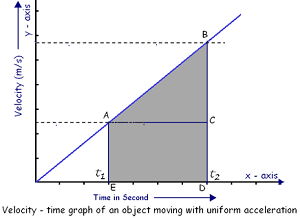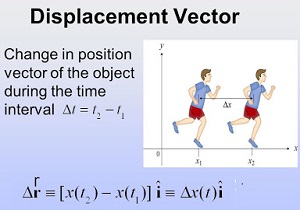Motion in A Straight Line - Online Test
A car is traveling due west at 20.0 m/s. Find the velocity of the car after 37.00 s if its constant acceleration is 1.0 m/s2 due east. Assume the acceleration remains constant.
Let's let west direction as +ve.
Initial velocity u = + 20.0 m/s
Final velocity = ?
Acceleration a = - 1.0 m/s2
Time taken t = 37.0 s
We know,
v = u + at
=>
=> v = -17.0
-ve sign shows direction of velocity is opposite. So velocity is 17.0 m/s due east.
the slope of the x-t grpah will give you velocity. So, if u=0, the slope of graph at t=0 is 0.
for u>0 case, the initial slope is +ve and for negative u, the initial slope is negative now, s = ut + 0.5at2, where acceleration=a let initial position is xo,
x=xxo+ut+0.5at2 ,
Hence you will get parabolic shapes.
When velocity – time graph is plotted for an object moving with uniform acceleration, the slope of the graph is a straight line.

The area under the velocity-time curve between times and is equal to the.
The area under the velocity-time curve between times t1 and t2 is equal to the displacement of the object during that interval of time.

If the velocities of two particles A and B are respectively and velocity of object B relative to object A is
Relative velocity of a body A with respect to another body B, when both are in motion, is the velocity with which A appears to move to B.
In general,
The distance (s) in metres travelled by a particle is related to time (t) in seconds by the equation of motion :
S= 10t + 4t2.
What is the initial velocity of the body?
Velocity is given by:
v = = =
Velocity at t=0,
Acceleration is the rate of change of velocity of an object with respect to time.
a =
SI unit of velocity = m/s
SI unit of time = s
So SI unit of acceleration =
